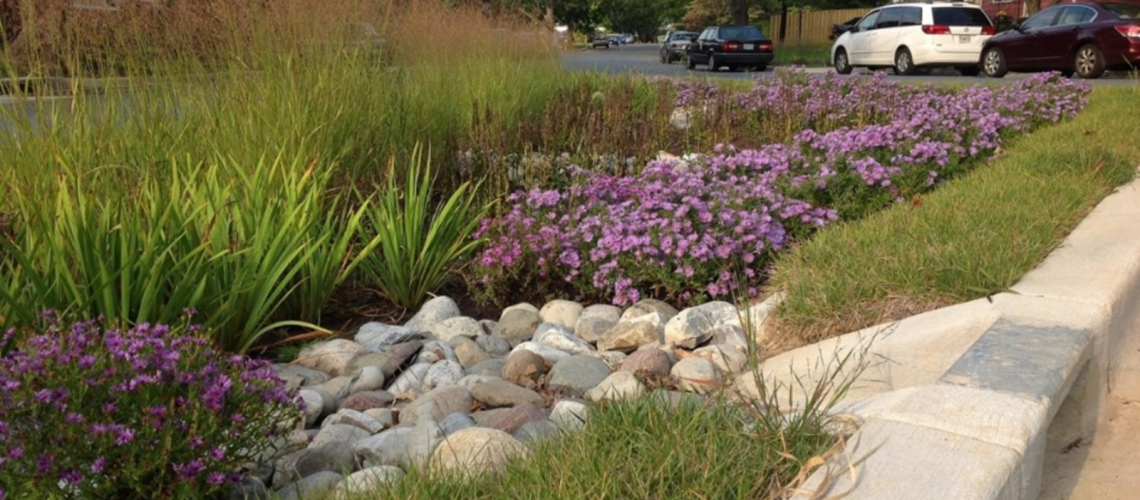Having drainage or flooding issues with your yard? A muddy spot or a steep slope? A rain garden could be a great addition to your landscape! It’s not only eye pleasing, but it also provides a great deal of benefits beyond stormwater control.
What is a Rain Garden?
A rain garden is a depression or channel in the ground designed to hold stormwater runoff using planted vegetation. When stormwater runoff passes through the rain garden, the vegetation will slow the water down and gather the water, allowing it to infiltrate into the soil.
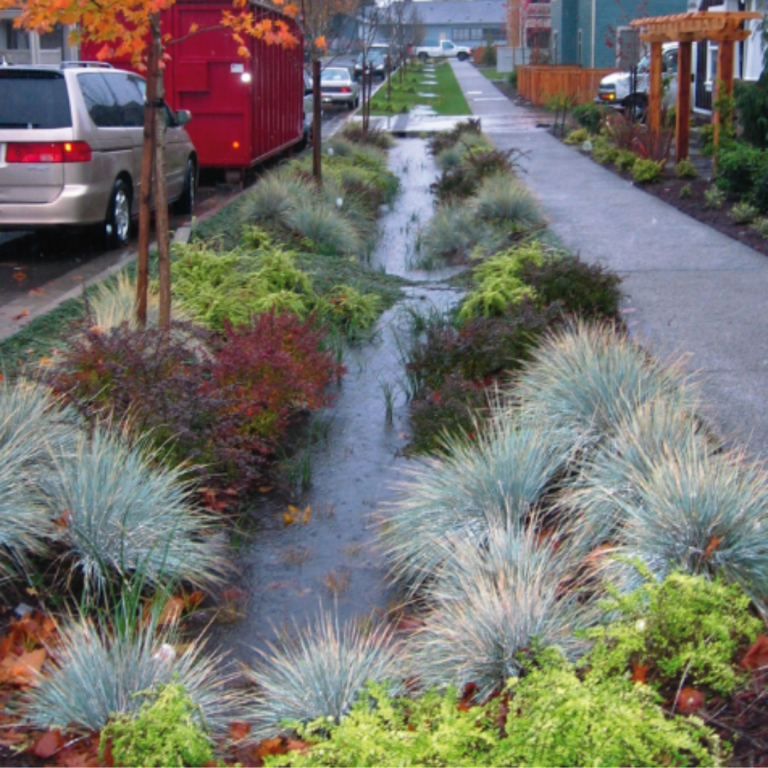
Benefits of a Rain Garden
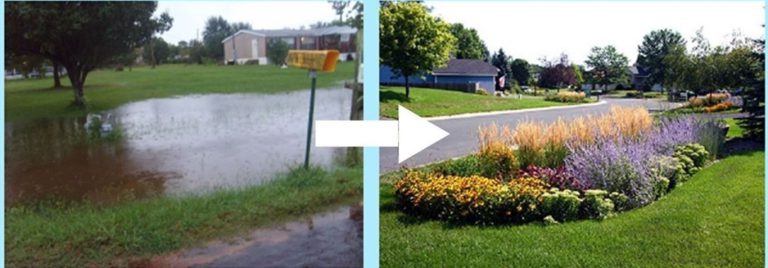

Reduces and controls stormwater runoff.
Reduces flooding.
Reduces erosion caused by fast-moving stormwater.
Filters out chemicals and pollutants, keeping them out of local waterways.
Slows down runoff allowing it to infiltrate into the ground. This recharges groundwater and keeps the water that falls on your landscape in your soil.
Attracts and supports native wildlife.
Layers of a Rain Garden
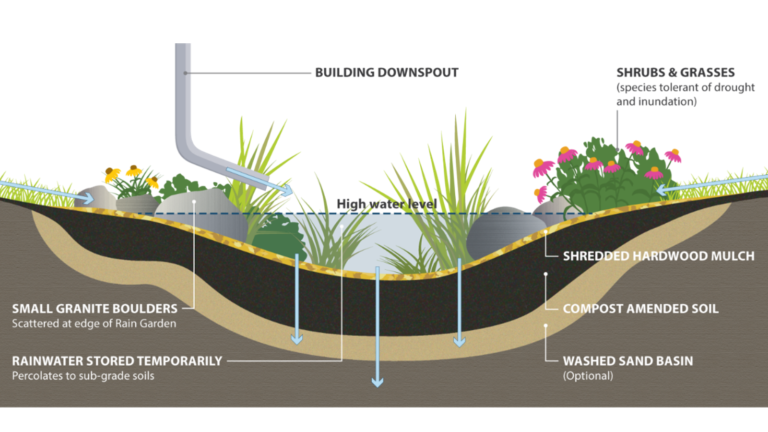
From Bottom to Top
Drainage Substrate Layer – Sand or gravel for good drainage. This layer is optional, depending on the amount of drainage offered by existing soil.
Soil Layer – Compost amended soil to plant into.
Plants – Native plants that slow and filter water.
Mulch – Place a 2-3 inch layer of mulch for the plants and to control erosion.
Rocks – Place larger rocks around the edges, under downspouts, or otherwise where the water will be flowing in to slow it down. This layer is also optional, depending on how fast your stormwater is coming in the rain garden.
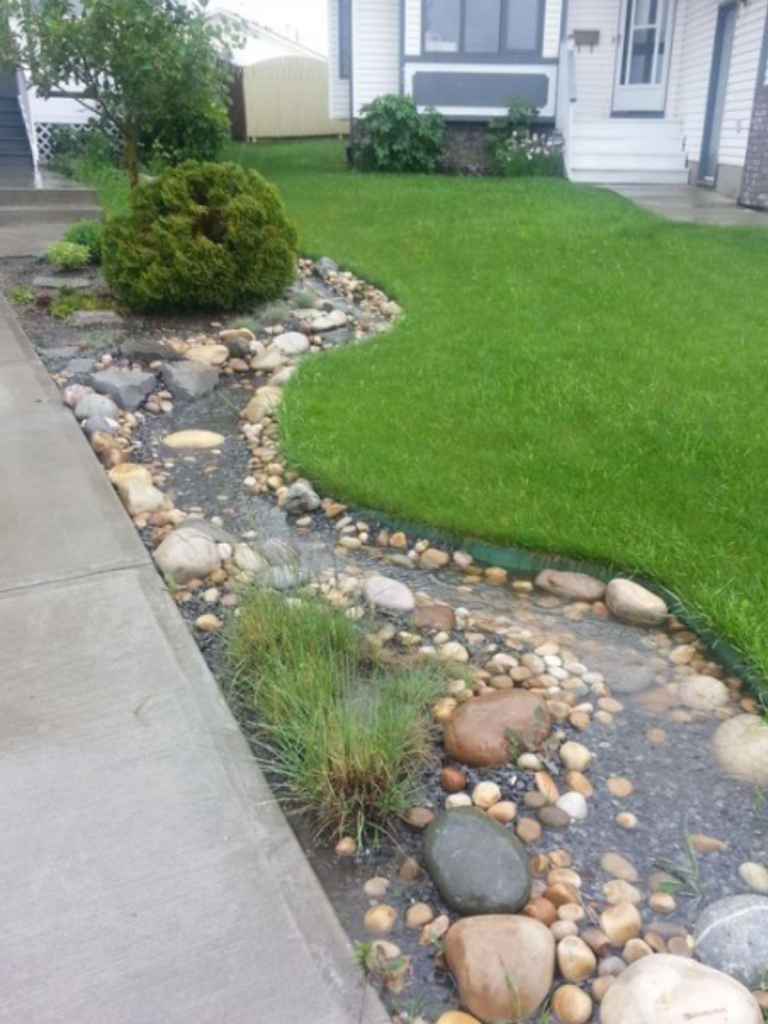
How to Make a Rain Garden
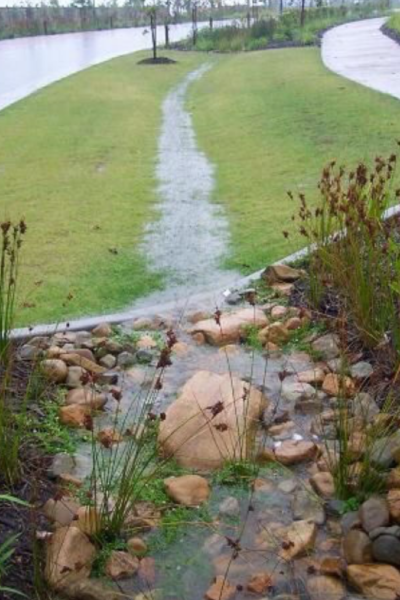
Step 1: Placement
The perfect place to have a rain garden is where water naturally gathers. This can be under a downspout, at the bottom of slopes, or at depressions. Water from a downspout can also be redirected to a desired location. Another great place to add a rain garden is at the edge of sloped yards, to stop water from flowing onto the street.
At this stage, it’s a great time to plan out what materials you need and what type of plants you want to add. Plant choice will depend on the amount of sunlight the area gets and how wet the soil stays.
Step 2: Gather Your Materials
- Digging tools
- Gravel or sand for good drainage in the bottom layer
- Soil or compost amended soil for planting
- Native plants for filtration and erosion control
- Rocks or large boulders to slow water flow
- Mulch for plants (optional)
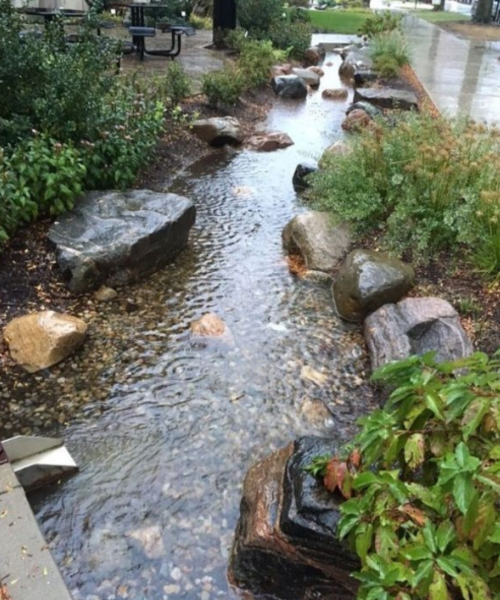
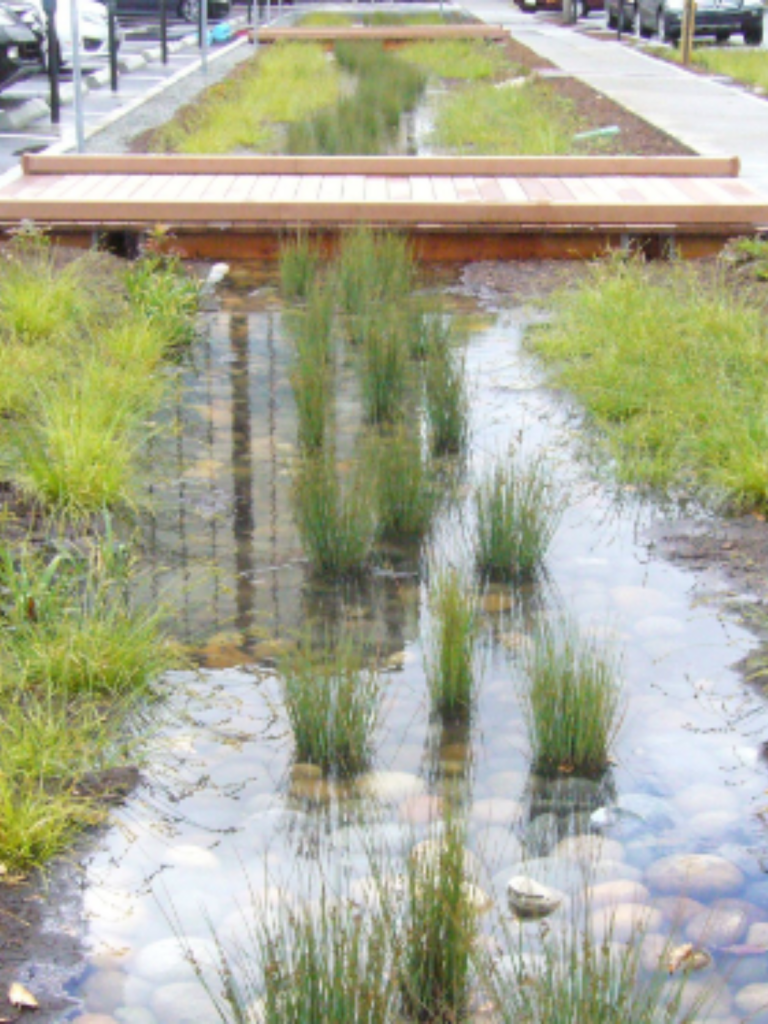
Step 3: Put it all together
- Start by digging a depression in the ground. Create a raised bank around the depression or on the side opposite the water flow, like at the bottom of a slope.
- Add in the drainage substrate of your choice. You can add a layer of gravel and a layer of sand or use just one or the other.
- Add in soil and mix in compost.
- Plant your desired native plants.
- Add mulch and rocks if needed.
Important Tip: Rain gardens work best when all the water soaks in after 24-48 hours. If your garden is holding water for longer than 72 hours, you may need more drainage substrate at the bottom.
Rain Garden Plant Choice
Rain gardens will be very wet sometimes but will likely stay at typical soil moisture between rain events. Many rain gardens are not irrigated, so for North Texas it is smart to choose plants that are also happy to be dry during our hot summers. For this reason, the best rain garden plants are native plants that are ok with wet feet but are happy to be dry, like those that naturally grow near streams and in floodplains.
First, find native plants based on the amount of sunlight the area gets. Choose the plants that have medium water needs and are okay with being wet or dry. Take a look at the suggestions below or easily search by sun and water needs at http://www.txsmartscape.com.
Place more water-loving plants in the middle, where the lowest depression is, and plants that like it drier near the edges. Plant more thick, fibrous plants like large grasses or bushes in the middle, and plant smaller flowers and ferns around the edges. Another great choice for a low maintenance rain garden is to seed it all with wildflowers.
Rain Garden Plant Suggestions
Grasses
Bushy Bluestem – Andropogon glomeratus
Eastern Gamagrass – Tripsacum dactyloides (pictured)
Inland Seaoats – Chasmanthium latifolium
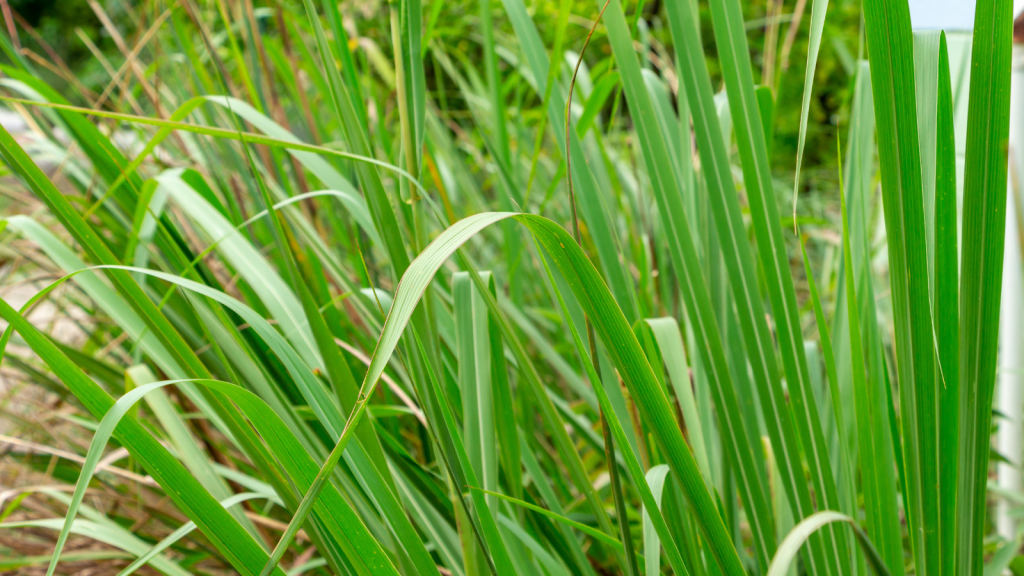
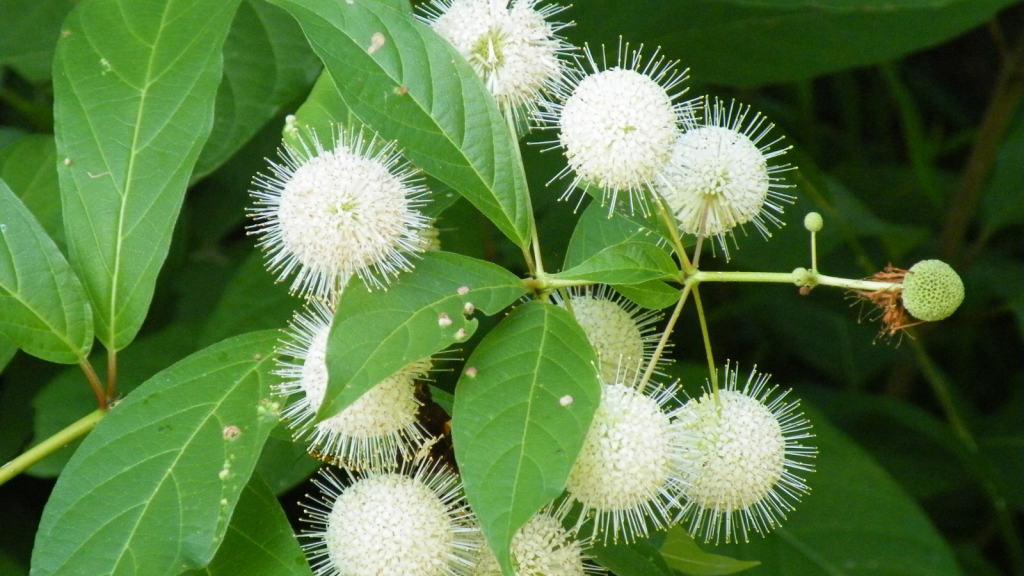
Bushes
Buttonbush – Cephalanthus occidentalis (pictured)
Beautyberry – Callicarpa americana
Flame Acanthus – Anisacanthus quadrifidus
Flowers
Gregg’s Mistflower – Conoclinium greggii (pictured)
Giant Coneflower – Rudbeckia maxima
Ironweed – Vernonia baldwinii
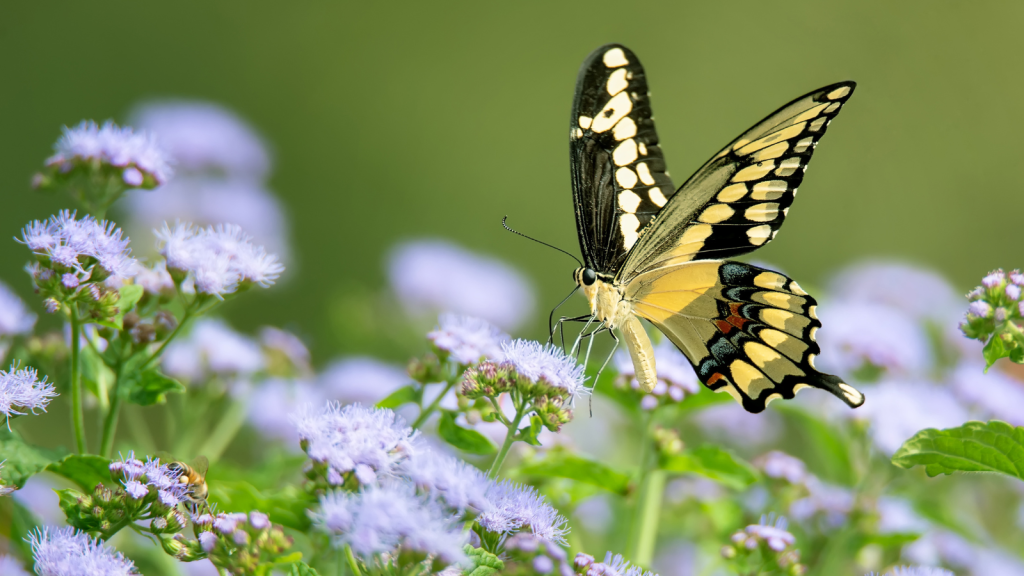
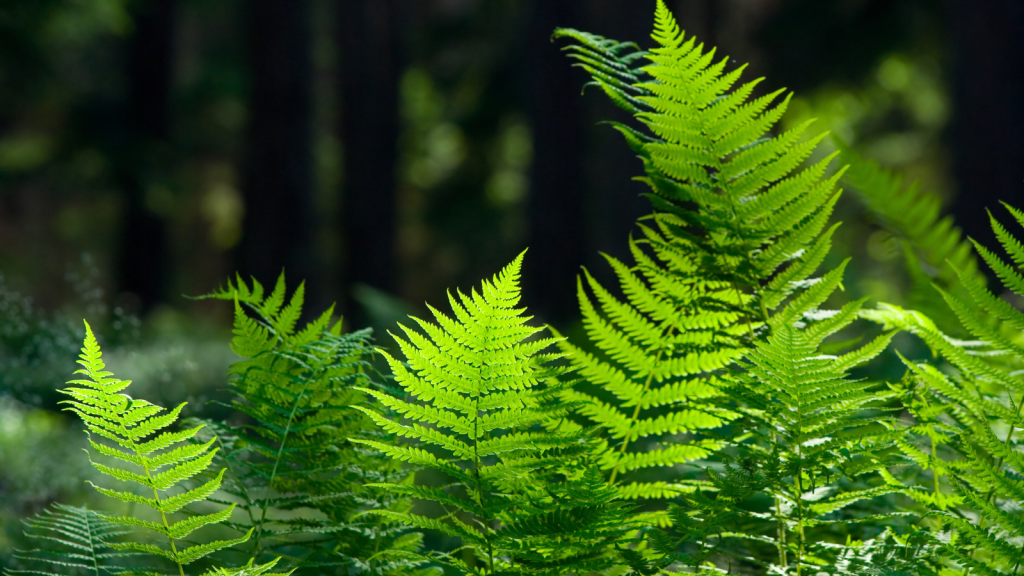
Groundcover
Native Wood Fern – Thelypteris kunthii (pictured)
Frog Fruit – Phyla nodiflora
Horseherb – Calyptocarpus vialis
Now you are ready to make your own rain garden!
Learn even more about rain gardens here: https://www.epa.gov/soakuptherain/soak-rain-rain-gardens

